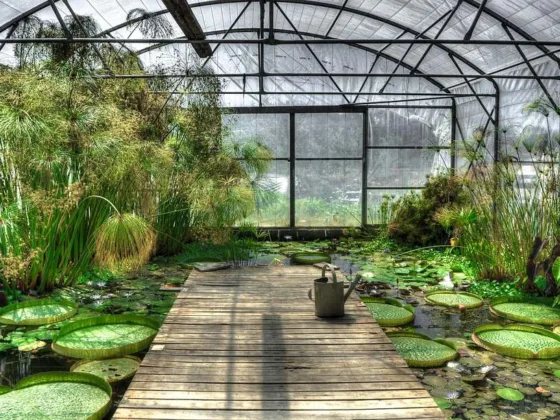Table of Contents Show
Outdoor gardening offers many benefits including exposure to Vitamin D, which strengthens bones and the immune system. Gardening also builds some physical strength and has been shown to improve cognitive skills.
When you first hear the word, you probably think of flowers and edibles (vegetables, fruits, and herbs). But it also incorporates landscaping, turf, design, and study of insects, birds, and small animals.
Even if you are a novice, incorporating some basic gardening knowledge and tips can make the activity more enjoyable and successful.

1. Start Small
As you begin, start small in the 1st year. Choose only 2-3 of your favorite vegetables or select just one or two places for your flower beds. It is easy to be seduced by photos of luscious varieties of tomatoes or overflowing assortments of flowers.
Planting too large will place a huge load on the beginner and can quickly turn to burnout or exhaustion. As your skills and knowledge improve, you can grow your plots each year.
2. Take the Time to Plan
It is incredibly tempting to go out and dig in the dirt and plop those plants in the ground. Choosing the right spots for your plants means reading the seed packet or the tag that comes with a potted plant. Look for light requirements. Combine all the flowers that need full sun; then those that can take part in the sun; then shade, etc.
Most vegetables take full sun, but some can handle more than others. Then look at height. Place the taller plants toward the house or in the back so that the smaller ones get their share of daily sun.
3. Sizes Change
As you are planning, remember that the plants will not stay that same size. Look at the final height listed on the packet or tag, as well as the spread. It may look sparse at the onset, but as your garden matures, you will be glad you won’t need to go back and thin out.
If you are using the internet to get your information, be sure to use Advanced Search and plugin .edu as a criterion. This will get you listings of local universities that have information about your flowers or edibles. Their findings are based on research and not folklore.
4. Water
The next consideration is water. Also, group your plants according to the amount of water they will need. Some need more; some less. This is especially important if you are container gardening. Too much H2O will rot the roots. Also, plants absorb oxygen both through their leaves and roots.
Keeping roots too wet means the plant can’t oxygenate from below. Depending on the amount of rainfall in a particular year, most vegetables can deal with a long, deep watering between once and three times per week. Slow water, like with a soaker hose, is best so that the water penetrates deep below the surface.
The roots will seek out that water source and give you a good solid foundation rather than a shallow root system. You may want to invest in a probe to gauge the water needs. For containers just stick your finger into the soil to see if it is dry or not.
Read Also:
5. Prepare the Soil
Before you put the first seed or plant in the ground, be sure the soil is properly prepared. Work the soil by turning it as early in the spring as possible. Do not work it when wet or you will have a mud-pie mess and when it dries, it will be hard as a rock to deal with.
Incorporate organic matter. If you are using manure, this should be applied in the fall so that it has time to fully decompose and avoid the possibility of organic contamination. Check the weather service about frosts or be prepared to cover your early plants if the temperature drops.
Most plants need a minimum ground temperature to do well. Note this is ground and not air temperature. Check the appropriate depth for each plant since it will vary in type and variety.
6. Weeding
Undoubtedly the most dreaded part of gardening is weeding. The longer you allow weeds to stay, the better root system they have developed and the harder they are to get rid of. Weed mats are not as effective as you may think.
First, weeds will still develop, and second, these mats are a barrier between the nutrients you will add during feeding and the root system. Mulch is a much better idea. It will allow water and feedings to get to the root system. If you nip weeds in the very early stages, you will have less difficulty.
Mulch also provides a layer to keep the soil at a more even temperature. Not to mention, it gives the garden a finished look. Avoid over-mulching after the first planting.
Mulch applied too deep will not allow the seed sprouts to break through to the sunlight. Move the mulch away from young plants. Use care with “green” mulches like grass clippings. This can produce excessive heat during the decomposition and can harm your plants.
7. Hire a Service
If you have a blank slate, instead of hiring a landscaping service, you can easily plan your layout yourself. You need to know the dimensions of the property, including the space taken by the house and any other structures. Old school is graph paper and cutouts, but there are some great online programs you can use.
8. Plant Large to Small
Select tree placement based on the mature size of the tree. Be sure it is planted far enough from the house so that you won’t need to worry about limbs crashing through the roof and avoid all overhead power lines.
About trees…there is no perfect tree. Each will be susceptible to some sort of insect or disease or need some sort of maintenance. Next is shrubbery and finally small plants. Somewhere along the line, you need to decide on hardscaping. That will include pathways, retaining walls, water features, arbors, and nooks for playing or relaxing.
Keep moving things around on your graph until you are satisfied. Leave it for at least a week and then review it again. This will be your master plan and you can complete its project by project over time. Do not attempt to finish it in a single season.
If you find you enjoy this hobby, you will learn more season after season from your successes. There’s a lot to learn about gardening, but it’s a fun adventure and well worth the time and energy. Make the most of your gardening with these experienced gardeners’ tips.









